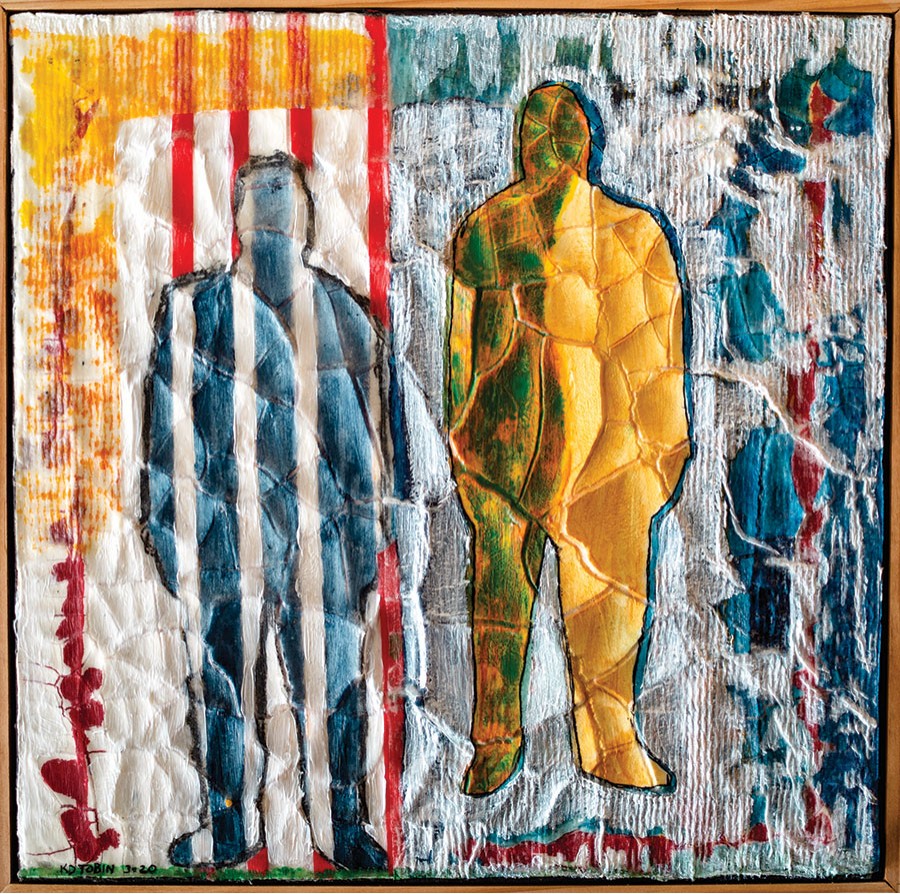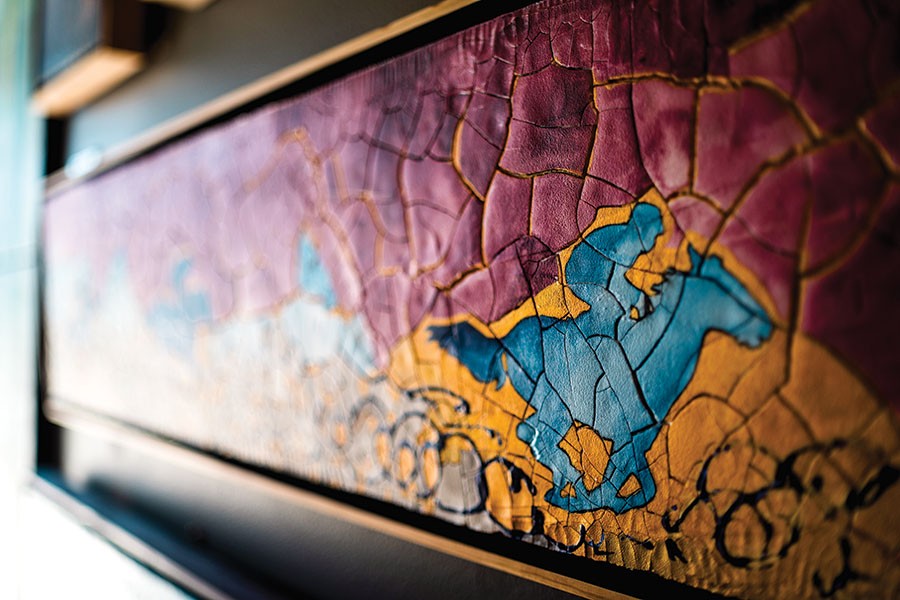Two paths diverged at a stop sign in Conneticut and K.D. Tobin could not decide which way to go. The well-worn path would take him to his family’s insurance brokerage where, as the eldest of his siblings, he had grown into the role of expected heir for more than a decade. If he went the other way, however, he could follow a decidedly different path toward a destination far removed from insurance licensure, monkey suits and expense reports. “I had wondered the last two years there, ‘Geez, what if I kept driving straight and called my folks and said I’m not gonna be able to make it in today?’”
In 1994, Tobin finally took the road less traveled and moved to California, where he would become a full-time painter. “You couldn’t find two more diametrically opposed careers,” he jokes. Tobin’s life since then has been a series of explorations in a variety of mediums: He produced commercials for PR firms, dipped a toe in screenwriting, operated a two-person graphic design business with his wife and dabbled as a connoisseur of travel. But his work putting paint to the canvas yielded his most noteworthy and lasting portfolio of creative works to date.

He settled in Santa Monica, where he came to treat his practice of painting as a nine-to-five, the floor of his 60-foot-by-15-foot studio strewn with canvases. In those days, Tobin worked on outsize pieces of over seven feet, crawling and walking over his work to reach every coordinate on the canvas. “The constant in all of those pieces, I think, is the man standing alone,” he says, referring to the recurring motif of solitary human figures in his “Human Condition” series, some in business suits. Whether or not the lonely men in suits in some way reflect his uninspiring days in the insurance business, he cannot tell. “I’m sure there’s some sort of tedium from the insurance industry expressed in it,” he says, “but it’s not melancholy; I was happy to be creating.”

During this time, Tobin began to absorb through osmosis both the abstract and figurative work of Richard Diebenkorn and Caio Fonseca, among others. From these influences and the subliminal spaces from which all creation manifests, Tobin borrowed a certain preoccupation with geometric forms and a bold, childlike approach to color. But he would also develop a sort of signature style by layering acrylic paint over crackle paste. When dry, the paste creates a textured look on the canvas much like sun-dried mud on the banks of a river, and from there, he storms up a brain full of concepts that work for the particular pattern of cracks on each canvas. Somewhat ironically, Tobin’s “Santa Monica” series, his self-declared “homage to Diebenkorn,” was not painted until well after moving to Sarasota in 2003. The series seems to go down a rabbit hole at the entrance of which rests Diebenkorn’s “Ocean Park” series, with squares and straight lines favoring the outer edges of the canvas. But the images seem to spill and fragment into the cracks of the dried paste, giving Tobin’s work a tactile appeal and more dimension.
The spoils of Tobin’s travels through seaside states include exhibitions up and down the coasts of both California and Florida, countless pieces sold and hung in private collections around the world and, in 2006, the title of Golden Certified Working Artist, a sort of ambassadorship for Golden Acrylics that sees him travel the Southeast teaching others how to work with the paint. In 2017, he published a novel, a sex-filled story that follows seven characters and their travels around the world. “There are a couple of production companies interested in making it a dramatic series,” he says with an air of conspiracy, “and if it gets picked up I’ll finally tell my mother about it.” It’s a life and a body of work that in many ways is a testament to Tobin’s willingness deviate to a lesser-known path, to choose a fork with gusto if it should diverge, and to reflect it back to the world like a postcard that reads, “I was here.” SRQ









